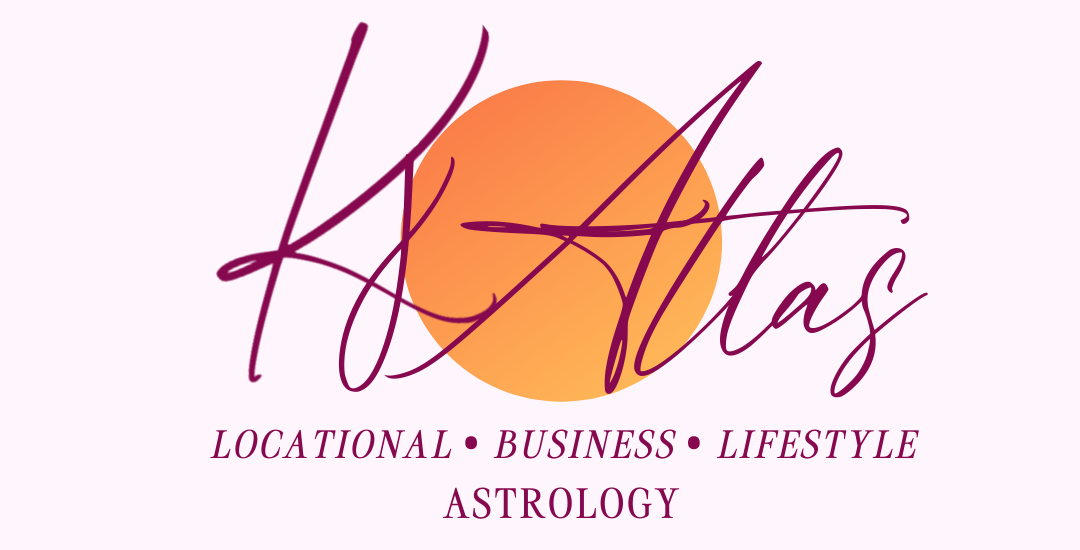Astrocartography: Discover Your Best (and Worst) Places to Live or Visit
Find your best places in the world using locational astrology.
To calculate an astrological birth chart, you need three things: birth date, birth time, and location. The third and final piece of critical information is often the most overlooked. Is location really that important?
It’s important enough to call for an entire branch of astrology known as Locational Astrology, commonly referred to as astrocartography or astrogeography. It can help you discover the best (and worst) places to live all around the world.
Whether you’re born in Tokyo or Boston, the planets in your chart will stay in the same signs. But thorough astrology is much more than planets in signs––there is a whole chart to unpack!
What should I look for in astrocartography?
One of the most significant parts of any natal chart is the sign rising up on the horizon when the chart is created (a.k.a., the time you were born). You might know this as the rising sign or ascendant, which says a lot about how you show up to other people. However, it also determines the remaining twelve houses of the chart.
The difference between a baby born in Tokyo and a baby born in Boston at the exact same minute of the same day is the sign on the horizon–– the rising sign! Obviously, this is because of time zones and the fact that it’s always night and it’s always daylight somewhere in the world.
If the baby born in Boston is a Leo rising and the baby born in Tokyo is an Aquarius rising, they will have vastly different personalities, life experiences, and birth charts just because they’re born in different locations.
A “relocated natal chart” in astrology
How does location impact astrology and energy after you’re born?
While you will always default to your natal chart using the location where you were born for just about any astrological inquiry, you can learn a lot about how you will experience a place based on what’s known as the “relocated natal chart.”
The relocated chart is the basis for most locational astrology, even astrocartography, perhaps the most common (and prettiest) locational astrology technique, where planetary lines of a million hypothetical relocated charts are condensed onto a map of the world in vibrant colored lines.
If you want to explore the best places for you all over the world, the astrocartography map is the best place to begin. While there is also lots of nuance in any astrology-related conversation, use the guide below to help you get acquainted with the general energies of each planetary line.
Planetary line themes in astrocartography
Sun: a place to be seen, the ego can develop, creative talents become more visible
Moon: a place to call home, go deeper into yourself, be with family, and nurture self-care practices
Mercury: a busy place with lots to do, many people to meet, and so much to learn – Go here to write a book!
Venus: a place to love and be loved, to indulge, create, and find pleasure and romance in all things
Mars: a place to stake your claim, get motivated, take action on your passions, and do big things
Jupiter: a place of expansion, good fortune, luck, overindulgence, and grand new beginnings
Saturn: a place of discipline, restrictions, and limitations, tough life lessons that make you stronger
Uranus: an unconventional place with lots of twists and turns, alternative experiences and people, and disruptions
Neptune: a dreamy place of bliss, confusion, spiritual happenings, unexplained phenomena, and the possibility of escapism
Pluto: a place for deep soul healing, psychological plumbing, and exploration of the circle of life
Nodes: a place you may have been in a past life that can still feel like you’ve been there before, fated experiences will often occur
Chiron: a place to heal your inner child, explore wounds from the past, and turn pain into art or healing practices
In addition to these themes, in astrocartography it’s essential to consider the sign where the planet lives in your chart because it will flavor your experience. An Aries Sun line will have a very different vibe from a Virgo Sun line––one will emphasize one’s love of action, adventure, and taking the initiative, while the other might bring light to a desire to be of service or develop skills in helping others.
You’ve probably experienced the difference location can make
You might have experienced the power of locational astrology before without even realizing it. If you’ve ever traveled to a place that felt absolutely magical but you couldn’t figure out why, this might be a favorable place for you astrologically.
If you’ve gone on vacation only to be riddled with multiple bad luck scenarios, you might be in a less favorable place! This recently happened to my friend on vacation to Mexico. A well-planned trip was turned on its head with cancellations, disruptions and unexpected wild experiences. As it turns out, she was directly on a Uranus line, which wouldn’t be my first choice for relaxing vacation conditions. On the other hand, Venus is a crowd favorite for a blissful trip away.
I grew up on my Saturn line on the East Coast and couldn’t figure out why I disliked it so much until I discovered locational astrology many years ago while living on the West Coast, a place where I felt like I could finally breathe again.
Examples of how astrocartography can impact lives
Annie took a sabbatical to India with her new husband, which changed the course of her life forever. It wasn’t until 17 years later that she realized this spiritual awakening occurred at the strongest point of her Neptune line. Her natal Neptune is in Sagittarius, the sign of philosophy and other cultures.
Brianna was having trouble moving forward in her career as a project manager but wanted to break into a new niche putting her passion for music to work. Less than a month after landing on her Jupiter line in Los Angeles, she secured a dream job in the industry. Her natal Jupiter is in Libra, the sign of music and artistic pursuits.
Tony and Sarah met right before the pandemic but knew their connection was something special, so they dated long-distance for 16 months until they were able to reconnect! They both have strong Venus lines in the Maldives, which is exactly where they decided to get married so they could reunite once again stateside.
Relocate your natal chart to find your astrocartography––where to live or visit (or where to avoid!)
If you want to explore locational astrology beyond what the astrocartography map can deliver, you’ll want to relocate your natal chart. Here’s how it’s done:
Let’s say you’re born in New York City. When calculating a relocated chart for a specific area, instead of entering your birthplace as New York City, you would enter the city of the new place and adjust the time so that it is correct.
How do you know if the time is correct?
The position of the planets and the signs do not change in the slightest. Take note of the degree of your Moon in your natal chart and ensure it stays the same once relocated. The only piece of the chart that changes is the Rising sign and, therefore, the houses.
This provides much more information about your experience in a place than the map on its own. Since this primarily revolves around the houses, it’s a good idea to know what you want in a place––career advancement, love, to feel at home, deep connections, or anything else!
Have you always felt the pull to travel somewhere far away, but not sure why? Maybe you’re planning a big move but haven’t decided where or when to go. Astrocartography helps you discover the best places in the world, unique to you, and when you’re most supported to make the change.
This article was originally written for Astrostyle. View the article here.
Book your one-on-one locational astrology session with KJ Atlas!




